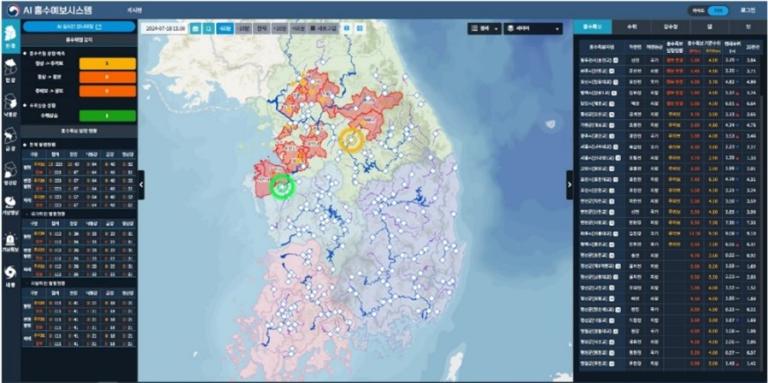WMO and the Republic of Korea to explore the use of AI and Digital Twin technologies for flood forecasting
Effective flood monitoring and forecasting are essential components of disaster risk reduction and climate adaptation strategies. Efforts to strengthen these capabilities can help to significantly reduce vulnerabilities and enhance resilience. The emergence of technologies, such as Artificial Intelligence (AI), Digital Twins, Quantum Computing and others, brings new avenues for improving flood forecasting accuracy and lead times. To benefit from the opportunities these technologies offer, WMO has signed a Memorandum of Understanding (MoU) with the Republic of Korea to explore the use of AI and Digital Twin technologies to strengthen capacities around flood forecasting.
The Republic of Korea has already acquired technological expertise and experience with various emerging technologies that it is using for flood monitoring and forecasting applications. For example, the Ministry of Environment's AI-based flood forecasting system has been installed in some 223 locations around the country, with a focus on areas that are prone to flooding, such as near large rivers and tributaries. The system analyzes real-time data from the observation network, including rainfall intensity, water levels, and soil moisture to predict flood risks. By leveraging an advanced Long Short-Term Memory (LSTM) model, the system learns from historical and real-time data to predict river water levels at 10-minute intervals, enabling near real-time forecasts.

The LSTM model combines statistical learning with physical hydrological and hydraulic modeling techniques. It estimates flow rates using the storage function method and calculates water levels accordingly. When the forecasted levels exceed predefined thresholds, the system triggers alerts to relevant authorities and the public, facilitating prompt emergency responses. This is possible through integration with Short Message Services (SMS) that deliver alerts to local governments and relevant agencies and through the Cell Broadcasting Services (CBS) that deliver advisories to the public. In addition, the Ministry has also worked to integrate real-time alerts with local navigation services, thereby providing users with near real time information on flood risks and impacted areas.
The Ministry is now advancing the development of digital twin solutions for integration with the AI flood forecasting system, which is expected to become operational in 2026. It will make use of high-resolution 3D spatial information and real-time monitoring of dams and basins to generate dynamic flood simulations. These simulations will provide users with detailed visualizations of potential flood depths and extents, enabling more effective scenario planning and response coordination.
The efforts from the Republic of Korea extend beyond its national borders. Through its Official Development Assistance, the Government is actively implementing AI-based flood forecasting systems in countries such as Indonesia, Lao People's Democratic Republic (Lao PDR) and Philippines. One example is the successfully established test bed for an AI flood prediction model in San-Mateo along the Marikina River in the Philippines through the KOICA-funded initiative. The system can predict the water levels using observed data from upstream water level gauges and rainfall stations. There are further plans to scale up the system soon through various projects and initiatives.
WMO is also exploring the use of AI and other advanced technologies in areas such as weather forecasting, flood prediction and disaster risk reduction. The WMO collaboration with the Ministry of Environment under the new MoU will directly contribute to advancing the Early Warnings for All initiative by promoting more timely, accurate, and accessible flood early warnings, especially in vulnerable regions.







